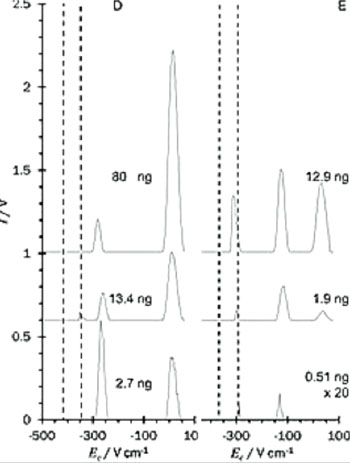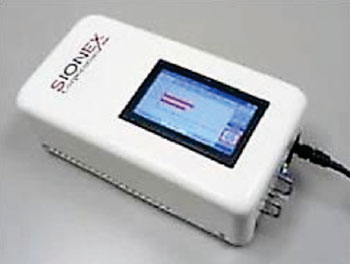Saliva Test Detects GHB and Alcohol Poisonings
By LabMedica International staff writers
Posted on 19 Jan 2016
A saliva-based test has been developed that offers the potential to screen for poisons commonly associated with the cheap or imitation manufacture of alcohol, and γ-hydroxybutyric acid, the so-called “date rape” drug GHB.Posted on 19 Jan 2016
Treatment of poisoning from the consumption of ethanol and the management of the intoxicated patient represents a significant burden on many health services. Further, poisoning from the consumption of other alcohols, notably methanol and ethylene glycol, occurs sporadically and from time to time outbreaks occur where food, drink or medicines are contaminated, resulting in significant mortality.
Scientists at Loughborough University (UK) and the University of Cordoba (Spain) added to the fresh saliva of volunteers and used a polydimethylsiloxane (PDMS) oral sampler to extract methanol, ethanol, ethylene glycol, 1,3-propandiol and γ-hydroxybutyric acid. The compounds were detected using gas chromatography-differential mobility spectrometry (GC-DMS). The extracted compounds were recovered by thermal desorption, isolated by gas chromatography and detected with differential mobility spectrometry, operating with a programmed dispersion field.
Calibration of the DMS under optimized conditions was undertaken using gas chromatography to introduce known on-column masses of the analytes injected in a solution of dichloromethane. The DMS used in the study was a planar device (SDP-1, Sionex Corporation, Bedford, MA, USA). Once the analytes had been added, the saliva standards were homogenized. Immediately after this had been done, a PDMS-coated titanium cartridge was removed from its sealed thermal desorption tube and placed into the vial, which was then sealed immediately.
C.L. Paul Thomas, PhD, a professor of Analytical Science, and coauthor of the study, said, “Many people attending accident and emergency departments have some kind of alcohol-related issue, particularly at the weekends. We're aiming to develop a test that is as simple as taking temperature with a thermometer that detects when patients are more than just drunk. We were surprised at the ease at which we could detect γ-hydroxybutyric acid. It's both a polar and acidic molecule, but it turned out to be easy to detect, even at the low concentrations we were studying.” The scientists are now working on running trials of their test in a clinical setting, on patients in emergency departments. The study was published on January 8, 2016, in the Journal of Breath Research.
Related Links:
Loughborough University
University of Cordoba















